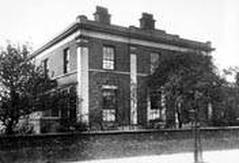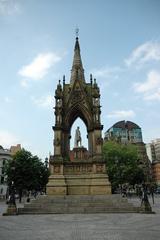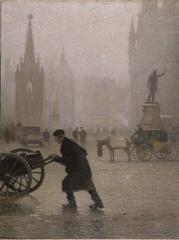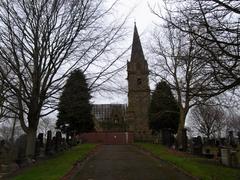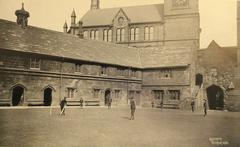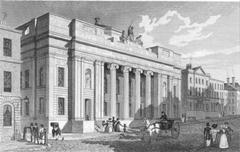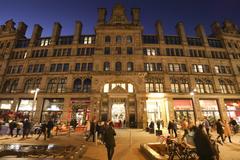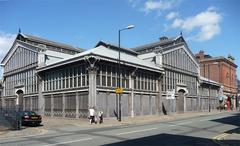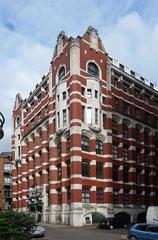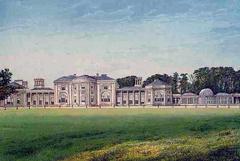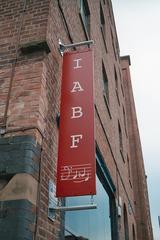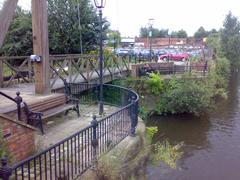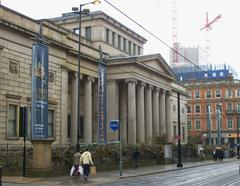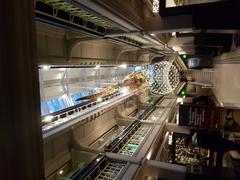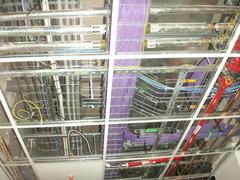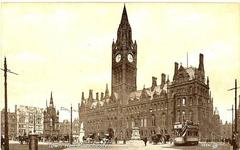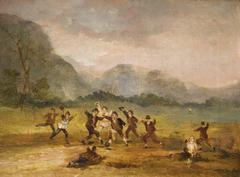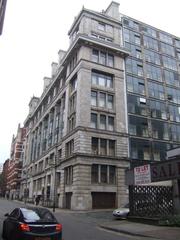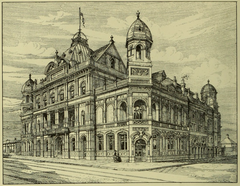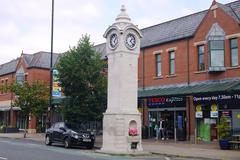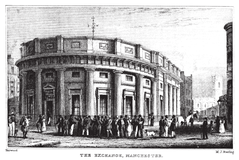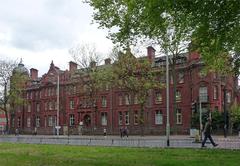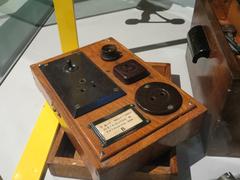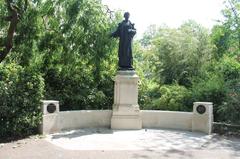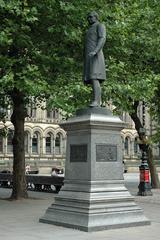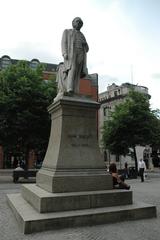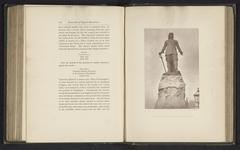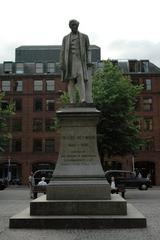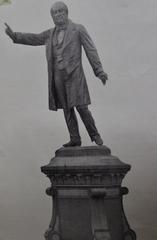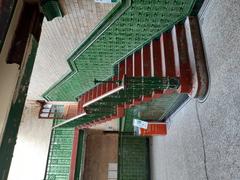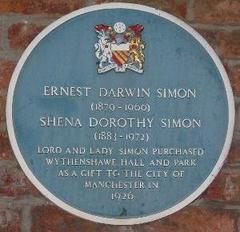Manchester Hydraulic Power: Visiting Hours, Tickets, and Historical Sites Guide
Date: 04/07/2025
Introduction
Manchester Hydraulic Power is a cornerstone of the city’s industrial heritage, representing Victorian engineering ingenuity that transformed urban life and manufacturing. Established in the late 19th century, this groundbreaking centralized system distributed high-pressure water through an extensive network of underground pipes, powering factories, warehouses, and public utilities across Manchester. Today, visitors can explore this legacy at key locations such as the Science and Industry Museum in Castlefield and the People’s History Museum at the former Water Street Hydraulic Power Station.
This detailed guide covers everything you need to know: visiting hours, ticket options, accessibility, guided tours, and the historical significance of Manchester’s hydraulic power network. Explore interactive exhibits, preserved machinery, and heritage sites that bring Manchester’s industrial story to life. For the most current details and booking information, refer to official resources like the Science and Industry Museum and Visit Manchester.
Table of Contents
- Introduction
- History and Significance of Manchester Hydraulic Power
- Infrastructure and Technical Innovations
- Applications and Urban Impact
- Decline, Preservation, and Legacy
- Visiting the Science and Industry Museum Hydraulic Power Exhibit
- Exploring the Water Street Pump House & People’s History Museum
- Self-Guided Exploration of Hydraulic Heritage in Manchester
- Practical Visitor Information
- Events and Special Experiences
- FAQ
- Visuals and Media Recommendations
- Call to Action
- Contact and Further Information
History and Significance of Manchester Hydraulic Power
In the late 1800s, as Manchester’s industries flourished, the need for a reliable, centralized power source became urgent. The solution was an advanced hydraulic power network, inaugurated in 1894, which delivered high-pressure water via more than 30 miles of underground cast-iron pipes. This system positioned Manchester alongside other pioneering cities like London and Liverpool (Science and Industry Museum).
Water for the system was sourced from deep boreholes, bypassing polluted rivers and canals. It was then stored in rooftop tanks at the main pumping stations—sometimes doubling as summertime swimming pools for engineers (Science and Industry Museum).
Infrastructure and Technical Innovations
By the 1920s, Manchester’s hydraulic power network served over 600 consumers, including factories, warehouses, and public buildings, and extended across the city (Science and Industry Museum). Three main stations—Gloucester Street, Water Street, and Pott Street—powered the network. The Water Street Pump House, opened in 1909, is especially notable for its six W. J. Galloway & Sons engines, which were converted from steam to electric power in 1927, reflecting Manchester’s ongoing commitment to technological advancement.
Applications and Urban Impact
Manchester’s hydraulic power system had a transformative effect on the city’s industrial and public life, powering:
- Passenger Lifts: Enhanced accessibility in multi-story buildings.
- Warehouse Machinery: Operated hoists and cranes critical for moving heavy goods, especially cotton bales.
- Factory Equipment: Drove intermittent, high-intensity machinery in textile mills.
- Public Infrastructure: Wound the Town Hall clocks, powered the Cathedral organ, and raised the Opera House safety curtain (Science and Industry Museum).
This centralized system reduced the proliferation of noisy, polluting steam engines and simplified maintenance citywide.
Decline, Preservation, and Legacy
With the rise of affordable electric power in the mid-20th century, demand for hydraulic power dwindled. The Water Street station, the last operational site, closed on Christmas Day, 1972 (Science and Industry Museum). Thankfully, key elements were preserved—including the W. J. Galloway & Sons hydraulic pumping engine, restored in 2002 and displayed in the Power Hall at the Science and Industry Museum.
Visiting the Science and Industry Museum Hydraulic Power Exhibit
Location and Accessibility
The Science and Industry Museum is located in Manchester’s historic Castlefield district, occupying the world’s oldest surviving passenger railway station. The museum is wheelchair accessible and provides facilities for visitors with disabilities.
Visiting Hours and Admission
- Open: Tuesday to Sunday, 10:00 AM – 5:00 PM (closed Mondays except during school holidays)
- Admission: Free
- Booking: Recommended for groups and during peak times (Official website)
Tickets and Guided Tours
General admission is free, but special guided tours focusing on the hydraulic power engine and other exhibits may require advance booking or a fee. Consult the Science and Industry Museum’s website for the latest schedules and ticketing information.
Key Exhibits and Demonstrations
The Power Hall features the restored hydraulic pumping engine—an iconic survivor of Manchester’s network. Live demonstrations and interpretive displays offer immersive experiences for visitors of all ages. Note: The Power Hall is currently undergoing renovation and will reopen in autumn 2025 with expanded exhibits on historic and modern energy technology (Science and Industry Museum; Visit Manchester).
Nearby Attractions
- Castlefield Urban Heritage Park: Scenic canals and historic railway viaducts.
- Roman Fort: Remnants of Manchester’s Roman origins.
- Bridgewater Canal: A vital artery of the Industrial Revolution.
Exploring the Water Street Pump House & People’s History Museum
Visiting Information
- Location: Water Street, Manchester City Centre (Left Bank, Spinningfields, M3 3ER)
- Opening Hours: Tuesday to Sunday, 10:00 AM – 5:00 PM (closed Mondays)
- Admission: Free (suggested £5 donation)
- Accessibility: Ramp and lift access; facilities for visitors with disabilities; assistance dogs welcome (People’s History Museum)
Historical Significance
The Water Street Pump House, operational from 1909 to 1972, is preserved as part of the People’s History Museum. It retains original steam and electric pumps, accumulators, tanks, and hydraulic cranes, providing a direct link to Manchester’s industrial past (Manchester History).
Guided Tours and Accessibility
Regular guided tours focusing on the hydraulic power system’s history and engineering are available on weekends and for groups by prior arrangement. Photography is encouraged, and interactive displays provide further insights.
Self-Guided Exploration of Hydraulic Heritage in Manchester
Beyond the main museums, traces of the hydraulic power system remain visible throughout the city:
- Disused Hydraulic Cranes and Machinery: Found near converted warehouses, especially in Castlefield and the Northern Quarter (Science and Industry Museum).
- Historic Safety Notices and Hoists: Repurposed industrial buildings often retain original features.
- Themed Walks and Treasure Hunts: Local operators periodically offer self-guided or guided heritage walks (CityDays).
Practical Visitor Information
Getting Around
Manchester’s city centre is highly walkable, with excellent public transport connections including Metrolink trams, buses, and trains (Visit Manchester). Cycle parking is available near major attractions.
Sustainability
The city aims for Net Zero by 2038; visitors are encouraged to use sustainable transport options. The Science and Industry Museum’s upcoming Power Hall exhibit will highlight sustainable energy developments (Visit Manchester).
Accommodation and Dining
A wide variety of hotels, hostels, and serviced apartments cater to different budgets, many within walking distance of heritage sites. Dining options include restaurants and bars in repurposed industrial settings (Visit Manchester).
Events and Special Experiences
Annual heritage open days, engineering demonstrations, and themed workshops provide opportunities to see machinery in operation and hear from local historians. Check the Science and Industry Museum’s events page and Visit Manchester’s events calendar for details.
FAQ
Q: What are the main visiting hours for Manchester Hydraulic Power sites?
A: Science and Industry Museum: Tuesday–Sunday, 10:00 AM–5:00 PM; People’s History Museum: Tuesday–Sunday, 10:00 AM–5:00 PM; both closed Mondays (except during school holidays for the Science and Industry Museum).
Q: Are tickets required?
A: General admission is free at both museums, though the People’s History Museum suggests a £5 donation. Booking is recommended for guided tours and groups.
Q: Are the sites accessible?
A: Yes. Both museums offer step-free access, accessible restrooms, and services for visitors with disabilities.
Q: Are guided tours available?
A: Yes. Museums and local operators periodically offer tours focused on hydraulic heritage. Check official websites for current offerings.
Q: Can I take photographs?
A: Photography for personal use is generally allowed; please confirm specific exhibit policies upon arrival.
Visuals and Media Recommendations
Enhance your visit by viewing high-quality images and virtual tours available on museum websites:
- Exterior and interior shots of the engine houses and preserved machinery (alt: “Manchester Hydraulic Power engine house in Castlefield district”).
- Interactive scenes of visitors engaging with exhibits (alt: “Visitor participating in guided tour at Manchester Hydraulic Power”).
- Downloadable maps highlighting heritage sites (alt: “Map showing Manchester Hydraulic Power location in Castlefield”).
Short video clips and virtual tours are recommended for further engagement.
Call to Action
Ready to explore Manchester’s industrial legacy? Download the Audiala app for interactive guides, tour schedules, and exclusive content. Plan your visit today, and don’t forget to follow us on social media for the latest updates and special events.
Contact and Further Information
For up-to-date information, bookings, and visitor support, consult:
- Science and Industry Museum
- People’s History Museum
- Visit Manchester
- Manchester Visitor Information Centre
Summary and Final Tips
Exploring Manchester Hydraulic Power offers a compelling journey through the city’s industrial past, from the restored pumping engines at the Science and Industry Museum to the preserved Water Street Pump House at the People’s History Museum. Guided tours, interactive exhibits, and accessible facilities ensure a rewarding experience for all visitors. Manchester continues to honor its legacy of innovation and resilience, inspiring future generations through its carefully preserved industrial heritage.
For the latest visiting hours, ticketing, and events, always check official resources. Enhance your experience with the Audiala app and stay connected via social media for updates and exclusive content. Embrace the opportunity to witness firsthand the enduring legacy of Manchester’s hydraulic power.
References and Further Reading
- Visiting Manchester’s Historic Hydraulic Power Engine: Hours, Tickets, and History, 2023, Science and Industry Museum (https://www.scienceandindustrymuseum.org.uk)
- Manchester Hydraulic Power: Visiting Hours, Tickets & Historical Significance, 2023, People’s History Museum (https://phm.org.uk/)
- Exploring Manchester Hydraulic Power: Visiting Hours, Tickets, and Historical Sites, 2025, Visit Manchester (https://www.visitmanchester.com/)
- Manchester Hydraulic Power Co, Grace’s Guide, 2023 (https://www.gracesguide.co.uk/Manchester_Hydraulic_Power_Co)
- Manchester Hydraulic Power System, Wikipedia, 2023 (https://en.wikipedia.org/wiki/Manchester_Hydraulic_Power)
- Manchester Visitor Information Centre, 2023, Visit Manchester (https://www.visitmanchester.com/visitor-information/visitor-information-centre/)
- Science and Industry Museum Power Hall
- Manchester History
- CityDays
- Visit Manchester: Getting Around
- Top 10 Tips to Visit Manchester Well
- Luggage Storage Guide
- Tourist Places Guide - Manchester
